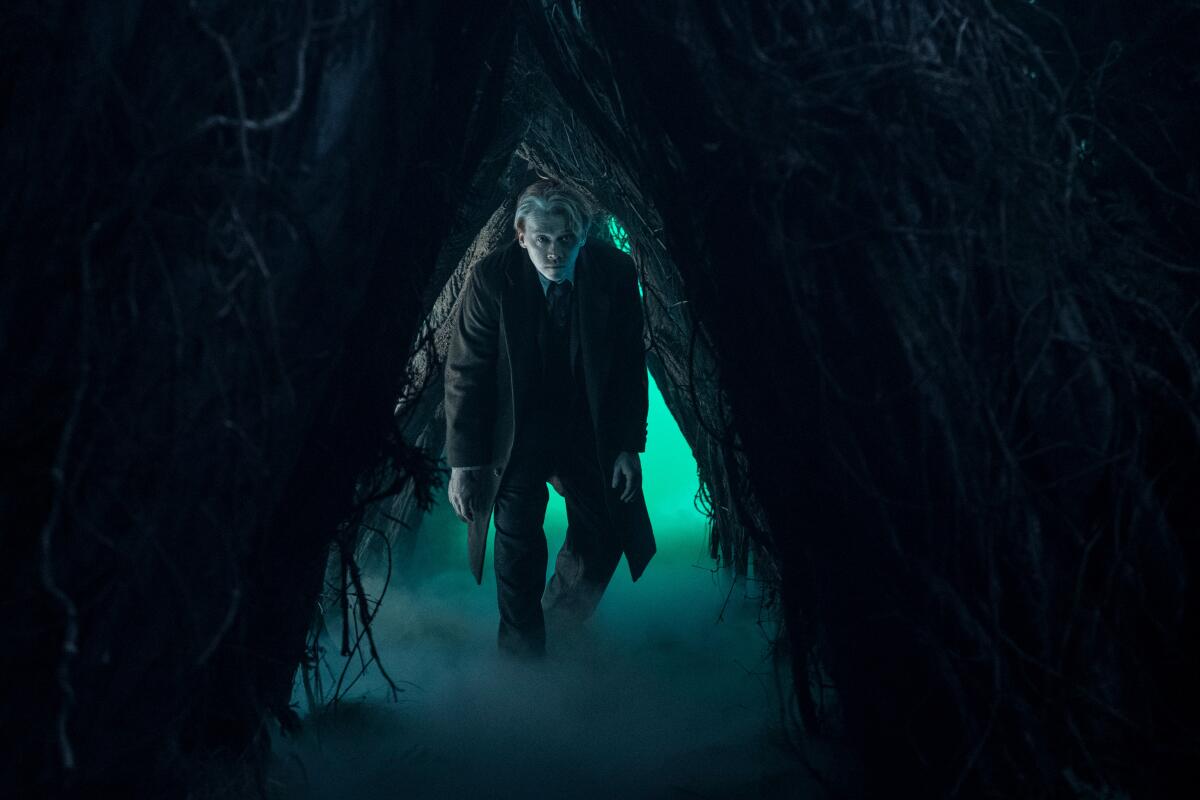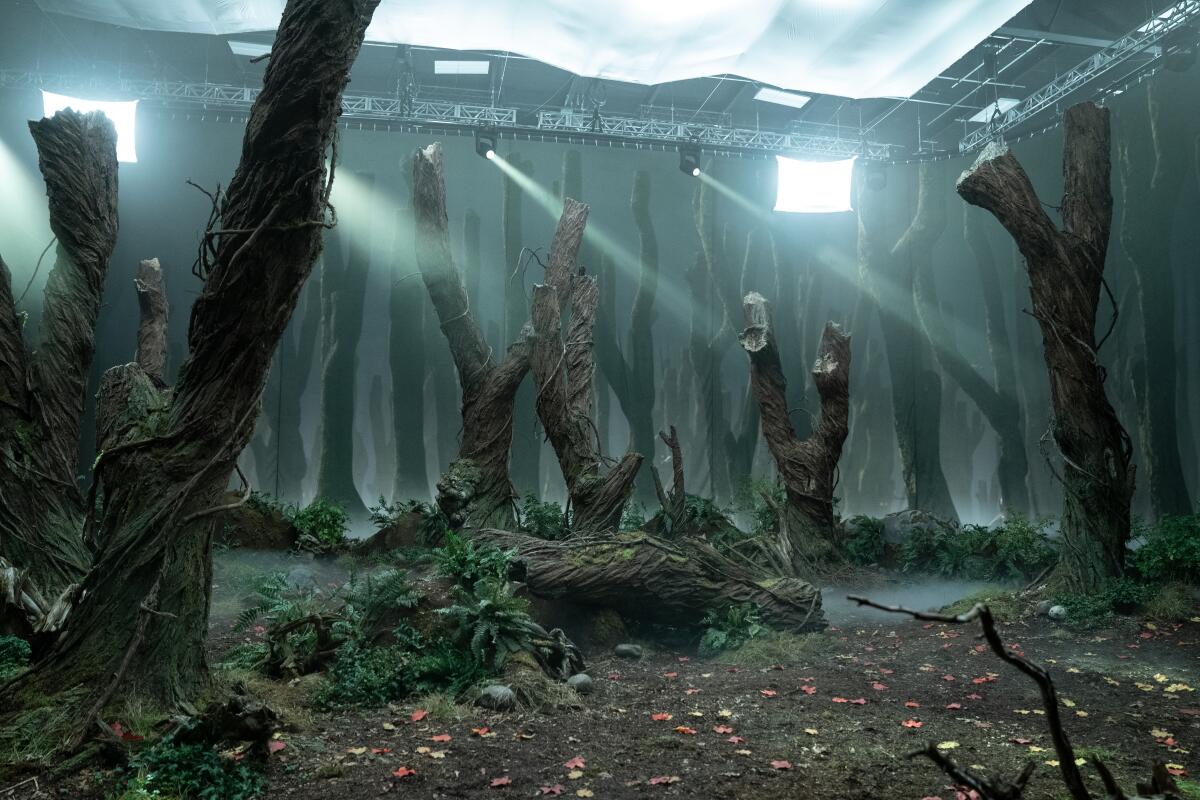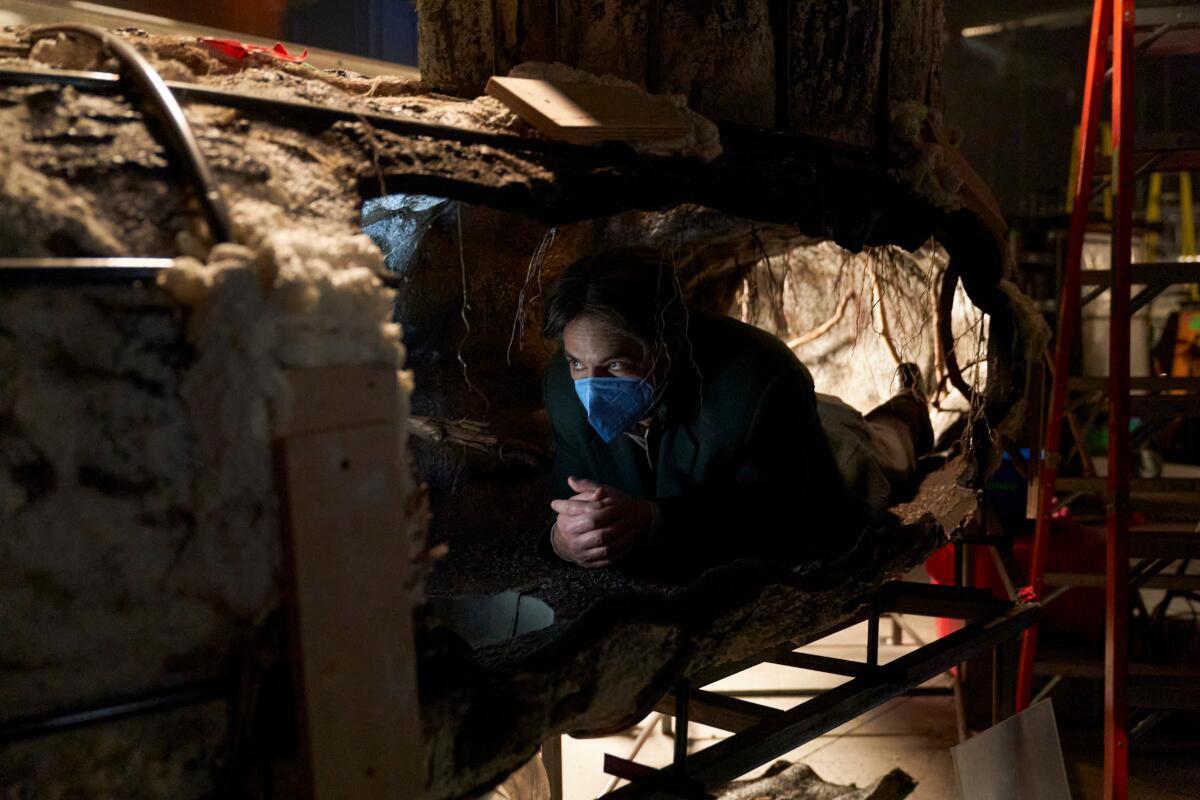Eight visions for eight episodes of one series? ‘Cabinet of Curiosities’ can be cruel

- Share via
It’s eight feature films in one. That’s how Emmy-nominated production designer Tamara Deverell describes Netflix’s horror anthology series “Guillermo del Toro’s Cabinet of Curiosities.” Episodes are set in eras ranging from early 20th century through the 1970s with locations as varied as a suburban living room and an otherworldly forest.
The series brings together filmmakers Del Toro admires, such as Catherine Hardwicke (“Twilight”) and Ana Lily Amirpour (“A Girl Walks Home Alone at Night”) to direct hour-long episodes mostly adapted from stories by renowned authors such as HP Lovecraft and current notables such as Emily Carroll and Del Toro himself.
“When I was first approached to do this, I was like, ‘This is kind of a designer’s dream,’ ” says Deverell, winner of 2022 and 2023 Art Directors Guild awards. “Cut to many months later going, ‘What was I thinking? All these directors?’ It was a real juggling act. I’m not doing it one at a time, either; I’m crossing over. So it was really a chess game of moves to get as much time as I could with the directors and understand them and how they ticked and how they approach their projects.”
A veteran of Del Toro’s “Nightmare Alley,” his FX series, “The Strain” and 1997’s “Mimic” (on which she was art director), Deverell calls ‘Cabinet’ one of the biggest challenges of her career. Most of it was shot on four stages in the Toronto area, with some sets being recycled from other episodes. The country house interior used in the final episode, “The Murmuring,” was repurposed in Episode 5, “Pickman’s Model” after having been recycled from elsewhere by Del Toro and producer J. Miles Dale.
“Pickman’s Model” ends in a basement where a terrible creature emerges from a well. That same basement was the opium den in Hardwicke’s “Dreams in the Witch House,” wherein the protagonist (Rupert Grint) ingests an elixir that opens a portal to a haunted forest.

“We built the vortexes of actual limbs and branches,” Deverell says of the mind-bending set achieved without the use of visual effects. “When he climbs out of the drug den and goes into the forest, he’s actually climbing into a practical set. The whole forest is practical.”
The design team’s greatest challenge was Episode 2, “Graveyard Rats,” directed by Vincenzo Natali (“Cube”). In it, a grave robber finds himself vying for ill-gotten goods with unusually aggressive rats in a series of tunnels under a graveyard.
“We had to figure out how to build the tunnels, how to coat them,” Deverell notes. “We couldn’t put real dirt in the tunnels. It could get in the lungs of the actor. So we had to develop dirt made from cork. And the roots that came through the dirt were made from plastic. But the biggest technical aspect of it was making a camera track.”
What they came up with was a tunnel with a slit in the top fitted with a camera rig mounted on a rail system over the set. Some of the walls were removable in order to relieve actor David Hewlett (who is asthmatic) from the claustrophobic set.

Each episode begins with Del Toro introducing the story beside an intricate cabinet that towers over him, its myriad drawers defying logic. The original concept for the cabinet was drawn by production designer Guy Davis, who often works with Del Toro. But it wasn’t until the production rented a piece of furniture with carved elements that inspiration kicked in.
“We modeled all these original hand-carved things from the antique piece,” Deverell says. “It’s mostly made of oak. We did three different versions of it. We had master carpenters. Then the drawers and aging and more aging and more drawers. There was a short one and there was a tall one that opened one way, and ones 11 feet tall that opened another way.”
Before becoming a production designer, Deverell’s early work as art director included David Cronenberg‘s “Crash” and “eXistenZ,” a pair of highlights in a career that dates to the late 1980s. Later this year, she has Sofia Coppola’s “Priscilla,” releasing during awards season, and she’s currently working on Del Toro’s next film, “Frankenstein.”
Although she’s an Oscar nominee for her work on “Nightmare Alley,” Deverell still got a thrill when she learned she was nominated for an Emmy. “I’ve done a lot of television in my life,” she says, referring to her work on “Star Trek: Discovery,” as well as the more terrestrial “Suits.” “I don’t do these things thinking I’m going to get an award. I do these things because I love my job. I thought the show has a lot of terrific, beautiful sets. It’s nice to be recognized. I wasn’t expecting that.”
Our BuzzMeter panel of veteran TV journalists predicts the winners in 14 categories of the 2023(?) Emmys. You can, too, in our weekly polls.
More to Read
Sign up for The Envelope
Get exclusive awards season news, in-depth interviews and columnist Glenn Whipp’s must-read analysis straight to your inbox.
You may occasionally receive promotional content from the Los Angeles Times.









